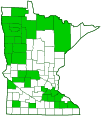sterile sedge
(Carex sterilis)
Conservation • Wetland • Description • Habitat • Ecology • Use • Distribution • Taxonomy
Description |
||
Sterile sedge is a stiffly erect, 4″ to 29″ tall, perennial sedge rising from a very short underground stem (rhizome). It usually forms dense clumps. It is often the dominant species. Sterile stems are poorly developed and are mostly reduced to basal clusters of leaves. Basal leaves are reduced to nearly bladeless sheaths. The flowering stem (culm) is sharply three-angled, stiff, hairless, brown at the base, and 4″ to 29″ long, longer than the leaves. It is not winged. The angles are rough to the touch on the upper portion of the stem. Three to five slender stem leaves, arranged in three vertical rows (ranks), appear on the lower third of the culm. The stem leaves are green, hairless, 3″ to 10″ long, and 1 ⁄32″to ⅛″wide. The leaf blade has a single prominent midvein and is folded like a fan, at least near the base. The margins are rough to the touch. The lower part of each leaf that surrounds the stem (sheath) is thin, papery, and white or nearly white. It is not fibrous. The tip of the sheath is usually concave, sometimes straight across. The lowermost part is brown. The membrane where the leaf meets the stem (ligule) is rounded to broadly angled and 1 ⁄64″ to 1 ⁄16″ long. It is mostly fused to the inner face of the leaf blade but it has a loose margin. The inflorescence consists of 3 to 8, usually 4, unisexual elongated flower clusters (spikes) at the end of the stem. The spikes are stalkless and are readily distinguished from each other. The upper spikes are crowded together but at least one spike, the lowest, is separate and does not overlap the adjacent spike. The modified leaf (bract) that usually subtends a sedge spike, is missing or inconspicuous and scale-like. The inflorescences are highly variable. The terminal spike is usually all male (staminate) or all female (pistillate). Some plants have all staminate spikes, sometimes with a few pistillate flowers scattered on some spikes. Some plants have all pistillate spikes, rarely with a few staminate flowers scattered on some spikes. Occasionally, entirely pistillate spikes and entirely staminate spikes will be mixed on the same plant. The common name refers to the fact that some clumps are all staminate, and do not produce seed—hence, sterile. Staminate spikes are slender, club-shaped, ⅛″ to 9 ⁄16″ long and 1 ⁄32″ to ⅛″ wide. They consist of 6 to 31 flowers in a dense, spiral arrangement. Each staminate flower is subtended by a single egg-shaped, 1 ⁄16″ to ⅛″ long scale. The scale is brown with a green midrib and pale margins. The flower consists of 3 stamens with conspicuous, bright yellow, 1 ⁄32″ to 1 ⁄16″ long anthers. The anthers fall off soon after pollination leaving just the filaments. Pistillate spikes are much broader, star-like, ⅛″ to ½″ long and 3 ⁄16″ to ¼″ wide. They consist of 5 to 26 flowers. Each pistillate flower is entirely enclosed by a sac-like bract (perigynium) and subtended by a single scale. The scale is egg-shaped, 1 ⁄16″ to ⅛″ long, and brown, with a green midrib and pale margins. It is narrowly pointed and is as long or nearly as long as the perigynium. The perigynium is chestnut brown to blackish, egg-shaped to almost triangular, 1 ⁄16″ to ⅛″ long, and 1 ⁄32″ to 1 ⁄16″wide. It is thickened and spongy at the base and evenly tapered from the body to the tip, not forming a shoulder. It is not winged. The extended tip (beak) is 1 ⁄64″ to 1 ⁄16″long, a third or more of the total length of the perigynium. It is densely and irregularly toothed along the margins. Two white stigmas emerge from a small opening at the tip of the perigynium. The fruit is a dry, yellowish-brown, egg-shaped to almost circular in outline, one-seeded capsule (achene). It is 1 ⁄32″ to 1 ⁄16″long, much smaller than the perigynium. It matures in June or July and drops from the plant soon after. |
||
Height |
||
4″ to 29″ |
||
Similar Species |
||
Interior sedge (Carex interior) leaves are narrower, no more than 1 ⁄16″wide. There are usually only 3 spikes per stem. The terminal spike has a narrow, club-shaped, staminate portion at the base that is as long as the broad, star-like, pistillate portion above. The beak of the perigynium is no more than one fourth the total length of the perigynium. |
||
Habitat |
||
Calcareous fens, calcareous wet prairies, and spring fens |
||
Ecology |
||
Maturing |
||
Mid-May to early August |
||
Pests and Diseases |
||
|
||
Use |
||
|
||
Distribution |
||||
|
Sources |
|||
| 6/24/2023 | ||||
Nativity |
||||
Native |
||||
Occurrence |
||||
Widespread statewide and locally common but rare due to limited habitat |
||||
Taxonomy |
|||
| Kingdom | Plantae (Plants) | ||
| Subkingdom | Pteridobiotina | ||
| Phylum | Tracheophyta (Vascular Plants) | ||
| Class | Liliopsida (Monocots) | ||
Order |
Poales (grasses, sedges, cattails, and allies) | ||
Family |
Cyperaceae (sedges) | ||
| Subfamily | Cyperoideae | ||
| Tribe | Cariceae | ||
Genus |
Carex (true sedges) | ||
| Subgenus | Vignea | ||
| Section | Stellulatae | ||
Synonyms |
|||
Carex elachycarpa Carex muricata var. sterilis Carex × minganinsularum Kobresia elachycarpa |
|||
Common Names |
|||
Aroostook sedge dioecious sedge fan star sedge sterile sedge |
|||
Unlike most plants in the genus Carex, this plant bears male and female flowers on separate plants. This characteristic gives the plant one of its common names, dioecious sedge. |
|||
Glossary
Achene
A dry, one-chambered, single-seeded seed capsule, formed from a single carpel, with the seed attached to the membranous outer layer (wall) only by the seed stalk; the wall, formed entirely from the wall of the superior ovary, does not split open at maturity, but relies on decay or predation to release the contents.
Beak
A comparatively short and stout, narrow or prolonged tip on a thickened organ, as on some fruits and seeds.
Bract
Modified leaf at the base of a flower stalk, flower cluster, or inflorescence.
Calcareous
Alkaline; rich in limestone; containing a high proportion of calcium carbonate.
Culm
The hollow or pithy stem of a grass, sedge, or rush.
Dioecious
Having imperfect flowers: the staminate flowers (male) and pistillate flowers (female) are borne on separate plants.
Ligule
In grasses and sedges, an outgrowth on the leaf at the junction of the blade and the sheath, usually membranous, sometimes no more than a fringe of hairs. In flowering plants, the ligule is the flat, strap-shaped, petal-like portion of the corolla of a ray floret.
Perigynium
In Carex and other closely related sedges, a sac-like or flask-shaped, highly modified bract that surrounds the pistillate flower and later encloses the achene. Plural: perigynia.
Pistillate
Referring to a flower that has a female reproductive organ (pistil) but does not have male reproductive organs (stamens).
Rhizome
A horizontal, usually underground stem. It serves as a reproductive structure, producing roots below and shoots above at the nodes.
Scale
In plants: A small, usually flat and thin, modified leaf resembling the scale of a fish. In sedges: A dry, reduced bract at the base of the perianth. In animals: A small rigid plate growing out of an animal’s skin to provide protection. In butterflies and moths: A plate on the surface of the wing providing coloration.
Sheath
The lower part of the leaf that surrounds the stem.
Spike
The arrangement of an unbranched, elongated inflorescence with stalkless flowers that mature from the base toward the tip. In Cyperaceae, it also denotes a collection of one or a group of stalkless flowers, each subtended by scales, on a single inflorescence axis.
Staminate
Referring to a flower that has a male reproductive organs (stamens) but does not have a female reproductive organ (pistil).
Stigma
In plants, the portion of the female part of the flower that is receptive to pollen. In Odonata and Hymenoptera, a blood-filled blister or dark spot at the leading edge of each wing toward the tip, thought to dampen wing vibrations and signal mates. In Lepidoptera, an area of specialized scent scales on the forewing of some skippers, hairstreaks, and moths.
Visitor Photos |
|||||
Share your photo of this plant. |
|||||
| This button not working for you? Simply email us at info@MinnesotaSeasons.com. Attach one or more photos and, if you like, a caption. |
|||||
|
|||||
MinnesotaSeasons.com Photos |
|||||
Plant |
|||||
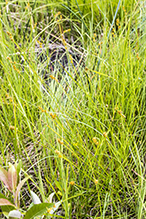 |
|||||
Spikes |
|||||
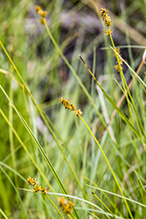 |
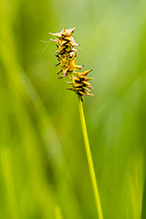 |
||||
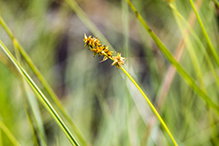 |
|||||

Slideshows |
||

Visitor Videos |
|||
Share your video of this plant. |
|||
| This button not working for you? Simply email us at info@MinnesotaSeasons.com. Attach a video, a YouTube link, or a cloud storage link. |
|||
Other Videos |
|||

Visitor Sightings |
|||||
Report a sighting of this plant. |
|||||
| This button not working for you? Simply email us at info@MinnesotaSeasons.com. Be sure to include a location. |
|||||
|
|||||
MinnesotaSeasons.com Sightings |
|||||

|
Created: Last Updated: © MinnesotaSeasons.com. All rights reserved. |
